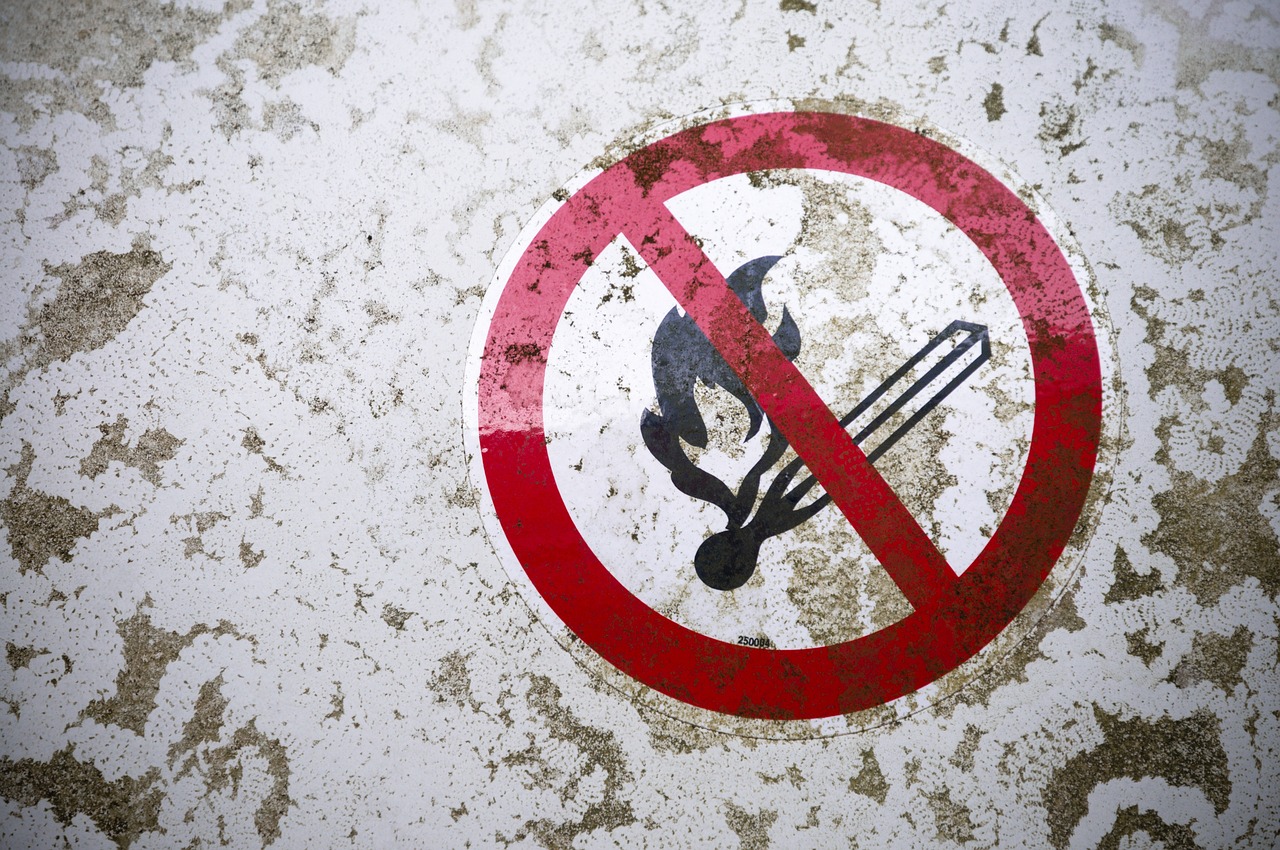The Role of Human Behavior in Shaping Workplace Safety
In today’s fast-paced work environment, the significance of workplace safety cannot be overstated. Every day, employees face potential hazards, and it’s often their behavior that determines whether these risks lead to accidents or are effectively managed. But what really drives this behavior? Is it merely a matter of following rules, or is there something deeper at play? Understanding the intricate relationship between human behavior and workplace safety is crucial for organizations aiming to cultivate a culture of safety.
To begin with, let’s consider the various elements that shape how employees act in their workspaces. It’s not just about having the right safety gear or protocols in place; it’s about creating an environment where safety is a shared value. When employees feel that their safety is prioritized and valued, they are more likely to engage in safe practices. This brings us to the concept of human factors, which encompass the psychological and physical attributes influencing behavior. Recognizing these factors can lead to the development of effective strategies that reduce accidents and enhance safety.
One of the most profound influences on human behavior in the workplace is the organizational culture. A positive safety culture can transform the way employees perceive and approach safety. Imagine working in a place where every team member is encouraged to speak up about potential hazards, where safety meetings are not just a formality but an engaging dialogue. In such environments, employees are more likely to take ownership of their safety and that of their colleagues, resulting in fewer incidents and a more cohesive team dynamic.
Leadership plays a pivotal role in shaping this culture. When leaders prioritize safety through their actions and communication, they set a powerful example for their teams. It’s not just about issuing safety guidelines; it’s about embodying those principles daily. Employees often look to their leaders for cues on how to behave, and when leaders demonstrate a commitment to safety, it resonates throughout the organization. This alignment between leadership and employee behavior is essential for cultivating a robust safety culture.
Another critical aspect is training and development. Ongoing training programs ensure that employees are not only aware of safety protocols but also understand their importance. Think of it like learning to ride a bike: you need both knowledge and practice to become proficient. Similarly, when employees are equipped with the skills to identify and mitigate risks, they become more confident in their ability to maintain a safe work environment.
Moreover, creating feedback mechanisms is vital. Employees should feel empowered to voice their concerns and suggestions regarding safety practices. This open line of communication fosters a sense of ownership and accountability among staff, enhancing overall workplace safety. When employees know their opinions matter, they are more likely to engage actively in safety initiatives, leading to a more vigilant and proactive workforce.
Engaging employees in safety initiatives is another effective strategy. When workers are involved in safety committees or recognized for their contributions to safety, they develop a deeper commitment to maintaining a safe work environment. It’s like being part of a sports team; when everyone plays their part, the team performs better. In the context of workplace safety, this collective effort can significantly reduce the likelihood of accidents.
In summary, the role of human behavior in shaping workplace safety is multifaceted. By understanding human factors, fostering a positive safety culture, demonstrating effective leadership, providing ongoing training, and encouraging employee engagement, organizations can create a safer work environment. The journey to a culture of safety is ongoing, but with the right strategies in place, it’s a journey that can lead to remarkable outcomes.
- What are human factors in workplace safety?
Human factors refer to the psychological and physical attributes that influence how employees behave in their work environment, impacting their safety practices. - How does organizational culture affect workplace safety?
A positive organizational culture encourages employees to prioritize safety, leading to proactive behavior and compliance with safety protocols. - What role does leadership play in workplace safety?
Effective leadership sets the tone for safety practices and influences employee attitudes towards safety measures through actions and communication. - Why is ongoing training important for workplace safety?
Ongoing training reinforces safety protocols and equips employees with the skills needed to identify and mitigate risks, ultimately promoting a safer workplace. - How can employee engagement improve workplace safety?
Engaging employees in safety initiatives fosters a sense of ownership and accountability, motivating them to prioritize safety and contribute to a safer work environment.

Understanding Human Factors
When we talk about human factors, we're diving into the fascinating interplay between our psychological and physical traits and how they influence our behavior in the workplace. Think about it: every day, we make countless decisions, often without even realizing it. These decisions can range from the simple act of wearing safety gear to more complex judgments about how to handle machinery. Understanding these factors is essential for creating a safe working environment where accidents are minimized, and productivity is maximized.
At the core of human factors are several key elements that shape how employees interact with their surroundings. These include perception, cognition, and emotion. For instance, an employee's perception of risk can greatly influence their behavior. If they perceive a task as safe, they might take unnecessary shortcuts, potentially leading to accidents. Conversely, a heightened sense of danger can lead to overly cautious behavior, which might hinder productivity. This balance is crucial.
Moreover, the cognitive processes involved in decision-making play a significant role. Employees often rely on mental shortcuts or heuristics to make quick decisions, especially in high-pressure situations. While these shortcuts can be beneficial, they can also lead to errors if the employee misjudges a situation. Understanding how these cognitive biases work can help organizations develop better training programs that enhance decision-making skills.
Emotions also play a critical role in workplace safety. Stress, anxiety, or even overconfidence can affect how an employee performs their tasks. For example, a stressed worker might overlook safety protocols, while a confident one might take unnecessary risks, believing they can handle any situation. Recognizing and addressing these emotional factors can lead to improved safety outcomes. To illustrate this, consider the following table that outlines the different human factors and their potential impact on workplace safety:
| Human Factor | Description | Potential Impact on Safety |
|---|---|---|
| Perception | How employees view risks and hazards | Can lead to either complacency or excessive caution |
| Cognition | Mental processes used in decision-making | Influences the likelihood of making errors |
| Emotion | Feelings that can affect performance | May lead to unsafe behaviors if not managed |
In summary, understanding human factors is not just about recognizing the individual traits of employees; it's about creating a holistic approach to workplace safety. By considering how perception, cognition, and emotion interplay, organizations can develop more effective safety protocols and training programs. This understanding ultimately fosters a culture of safety where employees feel empowered to make safe choices and contribute to a safer work environment.

The Impact of Culture on Safety
When we talk about workplace safety, we often think of rules, regulations, and the latest safety gear. But here's the kicker: the real game-changer in creating a safe work environment is organizational culture. Culture is like the invisible thread that weaves through every aspect of a company, influencing how employees perceive and prioritize safety. Think of it as the underlying atmosphere that can either promote proactive safety measures or foster negligence and risk-taking.
Imagine walking into a workplace where safety is not just a checkbox on a list but a core value that everyone embraces. This kind of environment encourages employees to speak up about unsafe practices without fear of retribution. It’s a place where safety meetings are not just mandatory but are seen as essential gatherings where ideas flow freely, and every voice matters. In contrast, a toxic culture may lead to a culture of silence, where employees ignore hazards because they fear repercussions or believe that reporting incidents could cost them their jobs.
So, how does this cultural impact play out in real life? A strong safety culture can lead to:
- Increased Compliance: Employees are more likely to follow safety protocols when they see their leaders actively promoting and participating in safety initiatives.
- Proactive Behavior: A positive culture inspires individuals to take the initiative in identifying potential hazards before they lead to accidents.
- Reduced Incidents: Companies with a robust safety culture often report fewer workplace injuries and accidents.
But it’s not just about having a culture; it’s about nurturing it. Leadership plays a pivotal role here. When leaders prioritize safety, it trickles down through the ranks. Employees mirror the behaviors and attitudes of their leaders. If management shows genuine concern for safety, employees are more likely to adopt the same mindset. It's like a ripple effect; one small act of commitment to safety can create waves of change throughout the organization.
Moreover, the integration of safety into everyday conversations and operations is key. When safety is treated as an ongoing conversation rather than a one-time training session, it becomes embedded in the company’s DNA. For instance, regular safety briefings, open forums for discussing safety concerns, and even casual chats about safety practices can keep the topic fresh and relevant. This approach not only reinforces the importance of safety but also makes it a shared responsibility among all employees.
To further illustrate this point, let’s look at a simple table comparing two hypothetical companies with different safety cultures:
| Company | Safety Culture | Incident Rate |
|---|---|---|
| Company A | Proactive, Open Communication | 2 incidents per year |
| Company B | Reactive, Fear-Based | 10 incidents per year |
As shown, Company A, with its proactive culture, experiences significantly fewer incidents compared to Company B, which operates in a fear-based environment. This stark contrast highlights how culture can directly affect safety outcomes.
In conclusion, fostering a strong safety culture is not just beneficial; it’s essential. It requires commitment from every level of the organization, from the top management to the newest employees. By prioritizing safety and embedding it into the company culture, organizations can create a safer, more productive work environment that not only protects employees but also enhances overall performance.

Leadership's Influence
In any organization, leadership plays a pivotal role in establishing a culture of safety. Think of leaders as the captains of a ship; their decisions, actions, and communication styles set the course for the entire crew. When leaders prioritize safety, it sends a clear message to employees that safety is not just a policy—it's a core value. This influence can manifest in various ways, from regular safety meetings to visible participation in safety drills. When leaders actively engage in safety practices, they model the behavior they wish to see in their teams.
Moreover, effective communication is key. Leaders who openly discuss safety concerns and encourage feedback create an environment where employees feel comfortable voicing their opinions. This can lead to a more comprehensive understanding of potential hazards and foster a sense of shared responsibility. For instance, when a manager acknowledges a near-miss incident and discusses it with the team, it not only highlights the importance of vigilance but also shows that leadership values employee input. This two-way communication can significantly enhance the overall safety culture.
Additionally, leaders must be aware that their actions often speak louder than words. If a leader neglects safety protocols or appears indifferent to safety concerns, employees are likely to mirror that behavior. On the other hand, leaders who consistently demonstrate a commitment to safety can inspire their teams to adopt similar attitudes. This ripple effect can lead to a workplace where safety is prioritized at every level. It's not just about having safety rules in place; it's about creating a culture where those rules are respected and followed.
To illustrate the impact of leadership on safety culture, consider the following table that outlines key leadership behaviors and their effects on workplace safety:
| Leadership Behavior | Impact on Safety Culture |
|---|---|
| Active Participation in Safety Training | Encourages employee engagement and shows commitment to safety. |
| Open Communication about Safety Issues | Fosters trust and encourages employees to report hazards without fear. |
| Recognition of Safe Practices | Motivates employees to prioritize safety and reinforces positive behavior. |
| Consistent Enforcement of Safety Policies | Establishes expectations and accountability among all employees. |
In conclusion, the influence of leadership on workplace safety cannot be overstated. By prioritizing safety, communicating effectively, and modeling safe behaviors, leaders can create a robust safety culture that resonates throughout the organization. When employees see their leaders genuinely committed to safety, they are more likely to follow suit, resulting in a safer and more productive work environment.
- What is the role of leadership in workplace safety?
Leadership sets the tone for safety culture, influencing employee behavior and attitudes towards safety practices. - How can leaders promote a culture of safety?
By actively participating in safety initiatives, fostering open communication, and recognizing safe behaviors. - What are some effective communication strategies for leaders?
Engaging in regular safety meetings, encouraging feedback, and discussing safety concerns openly. - Why is employee engagement important for workplace safety?
Engaged employees are more committed to maintaining a safe work environment and are likely to follow safety protocols diligently.

Training and Development
Training and development are not just buzzwords thrown around in corporate meetings; they are the backbone of a safe workplace. Imagine a ship sailing through uncharted waters without a skilled crew—chaos is bound to ensue. Similarly, in a work environment, employees must be equipped with the right knowledge and skills to navigate potential hazards. Regular training sessions empower employees to understand the intricacies of safety protocols and the importance of adhering to them. When employees are well-trained, they become the first line of defense in preventing accidents.
Moreover, the landscape of workplace safety is constantly evolving, with new technologies and methodologies emerging. This is where ongoing training comes into play. It’s not enough to have a one-time safety orientation; a continuous learning culture fosters adaptability and resilience among employees. For instance, consider the introduction of new machinery in a factory. Without proper training, employees may not only struggle to operate the equipment safely but might also inadvertently create risks for themselves and their colleagues. Therefore, regular training sessions should cover not just the basics but also updates on any new safety measures and equipment.
Incorporating various training methods can enhance engagement and retention. For example, a mix of traditional classroom training, hands-on workshops, and even digital e-learning platforms can cater to different learning styles. Some employees may thrive in interactive settings, while others might prefer self-paced online courses. By diversifying training methods, organizations can ensure that all employees grasp the critical safety protocols effectively.
Furthermore, effective training should include practical scenarios that employees might encounter on the job. Utilizing role-playing exercises or simulations can help employees practice their responses to potential hazards in a controlled environment. This approach not only builds confidence but also ingrains safe practices into their daily routines. After all, when faced with a real-life situation, those who have practiced will react more decisively and safely.
To measure the effectiveness of training programs, organizations should implement assessments and evaluations. Feedback from employees can provide insights into what aspects of the training were beneficial and what areas may need improvement. This iterative process of refining training programs ensures that they remain relevant and impactful. Additionally, recognizing employees who excel in safety training can serve as motivation for others, creating a culture of safety that is embraced by all.
In summary, investing in training and development is not merely a compliance requirement; it is a strategic initiative that pays dividends in workplace safety. By fostering a culture of continuous learning, organizations not only enhance safety but also promote employee engagement and satisfaction. Just as a well-oiled machine operates smoothly, a well-trained workforce is essential for maintaining a safe and productive work environment.
- Why is training and development important for workplace safety?
Training ensures that employees understand safety protocols and can effectively respond to potential hazards, reducing the risk of accidents. - How often should safety training be conducted?
Regular training should be conducted at least annually, with additional sessions as needed for new technologies or processes. - What methods can be used for effective safety training?
A combination of classroom training, hands-on workshops, and online courses can cater to different learning styles and enhance engagement. - How can organizations assess the effectiveness of their safety training?
Implementing assessments, gathering employee feedback, and observing behavior changes can help evaluate the effectiveness of training programs.

Feedback Mechanisms
In today’s fast-paced work environments, establishing effective feedback mechanisms is not just a luxury; it's a necessity. Employees need to feel that their voices are heard and their concerns are valued. When organizations create channels for open communication, they foster a culture where safety becomes a shared responsibility. Imagine a workplace where every employee feels empowered to speak up about unsafe conditions or practices without fear of retaliation. This is the essence of a robust feedback mechanism.
Feedback mechanisms can take many forms, from regular safety meetings to anonymous suggestion boxes. Each method has its unique advantages, and the key is to find a combination that works best for your organization. For instance, while some employees may feel comfortable sharing their thoughts in a group setting, others might prefer the anonymity of a suggestion box. Both methods can yield valuable insights into the safety culture of the workplace.
Moreover, it's essential to ensure that feedback is not just collected but also acted upon. When employees see their suggestions leading to real changes, it not only boosts morale but also reinforces the idea that safety is a priority. This can be illustrated through the following table that outlines how feedback mechanisms can be implemented effectively:
| Feedback Method | Description | Benefits |
|---|---|---|
| Safety Meetings | Regular gatherings to discuss safety issues and share ideas. | Encourages team collaboration and immediate feedback. |
| Anonymous Suggestion Boxes | Allows employees to submit concerns without revealing their identity. | Promotes honest feedback and reduces fear of backlash. |
| Surveys | Structured questionnaires to gauge employee opinions on safety. | Provides quantifiable data for analysis and improvement. |
In addition to these methods, organizations should consider implementing a feedback loop. This means not only gathering feedback but also communicating back to employees about what actions have been taken in response. For instance, if an employee suggests a modification to a safety protocol, management should inform the team about the decision made and the reasons behind it. This transparency builds trust and encourages more employees to participate in the feedback process.
Ultimately, a culture of safety thrives on communication. By prioritizing feedback mechanisms, organizations can create an environment where employees are not just passive recipients of safety protocols but active participants in shaping their safety culture. This engagement is crucial for reducing accidents and enhancing overall workplace safety. So, let’s ask ourselves: Are we genuinely listening to our employees? Are we ready to act on their feedback? The answers to these questions can significantly impact the safety landscape of any organization.
- What are feedback mechanisms in the workplace? Feedback mechanisms are systems or processes that allow employees to communicate their thoughts, concerns, and suggestions regarding workplace practices, particularly those related to safety.
- Why are feedback mechanisms important for workplace safety? They are crucial because they empower employees to report unsafe conditions, suggest improvements, and foster a culture of safety where everyone feels responsible for maintaining a safe environment.
- How can organizations implement effective feedback mechanisms? Organizations can implement effective feedback mechanisms by utilizing various methods such as safety meetings, anonymous suggestion boxes, and surveys, while ensuring that feedback is acted upon and communicated back to employees.

Employee Engagement Strategies
Engaging employees in safety initiatives is not just a checkbox exercise; it's a fundamental aspect of cultivating a thriving workplace safety culture. When employees feel involved and invested in safety practices, their commitment to maintaining a safe work environment naturally increases. But how can organizations effectively engage their workforce in these crucial initiatives? One effective method is through the formation of safety committees. These committees can serve as a platform for employees to share their insights and experiences regarding safety protocols, allowing them to contribute actively to the development of safety measures that directly impact their daily work lives.
Moreover, recognition programs can play a pivotal role in motivating employees to prioritize safety. When employees are acknowledged for their safe practices, it not only boosts their morale but also reinforces the importance of adhering to safety protocols. Imagine a scenario where an employee is publicly recognized for their diligence in following safety measures; this not only encourages that individual but also inspires their peers to emulate similar behaviors. Such recognition can come in various forms, from employee of the month awards to simple shout-outs during team meetings.
Additionally, creating an open environment where employees can voice their concerns and suggestions about safety practices is essential. This can be achieved through regular safety meetings or anonymous feedback channels that allow employees to express their thoughts without fear of repercussions. When employees see that their feedback leads to tangible changes, it fosters a sense of ownership and accountability, making them more likely to engage with safety initiatives actively.
Incorporating gamification into safety training programs can also enhance engagement. By turning safety training into an interactive experience, employees are more likely to participate actively. For instance, organizations can introduce challenges or competitions that reward teams for achieving safety milestones. This approach not only makes safety training more enjoyable but also instills a sense of camaraderie among employees as they work together towards common safety goals.
Ultimately, the key to successful employee engagement in safety initiatives lies in creating a culture where safety is viewed as a shared responsibility. By implementing these strategies, organizations can cultivate an environment where safety is not just a priority but a core value that every employee embraces. This collective commitment to safety can lead to a significant reduction in workplace incidents, making it a win-win for both employees and the organization.
- What are some effective ways to engage employees in safety initiatives?
Engaging employees can be achieved through safety committees, recognition programs, open feedback channels, and gamified training. - Why is employee engagement important for workplace safety?
When employees feel involved in safety practices, they are more likely to adhere to protocols and contribute to a safer work environment. - How can organizations measure the effectiveness of their engagement strategies?
Organizations can track safety incident rates, employee feedback, and participation levels in safety programs to measure effectiveness.

Behavioral Safety Programs
Behavioral safety programs are essential in today's workplace, as they focus on identifying and modifying unsafe behaviors that can lead to accidents and injuries. The core idea behind these programs is simple: by understanding the root causes of unsafe behaviors, organizations can implement targeted interventions that promote safer practices among employees. It's like fixing a leaky faucet; instead of just mopping up the water, you need to identify where the leak is coming from and address that issue directly.
One of the first steps in establishing an effective behavioral safety program is conducting a thorough assessment of current workplace practices. This assessment often involves gathering data on incidents, near misses, and employee feedback to pinpoint areas where unsafe behaviors are most prevalent. For instance, if a company notices a high number of slips and falls in a specific area, they can focus on that location to understand why these incidents are occurring. Are employees rushing? Is the flooring inadequate? By addressing these questions, organizations can tailor their interventions more effectively.
Moreover, observational techniques play a crucial role in behavioral safety programs. Regular observations allow safety personnel to monitor employee behavior in real time. This can be done through informal walk-throughs or structured observation sessions. By watching how employees interact with their environment, safety teams can identify unsafe practices and provide immediate feedback. For example, if an employee is seen lifting a heavy box incorrectly, a supervisor can step in to offer guidance on proper lifting techniques, thus preventing potential injuries.
Another vital aspect of behavioral safety programs is the incorporation of positive reinforcement. This approach encourages employees to adopt safe behaviors by recognizing and rewarding them for their efforts. When employees feel appreciated for following safety protocols, they are more likely to continue those behaviors. For example, a company might implement a recognition program where employees who consistently follow safety guidelines receive small rewards or public acknowledgment during team meetings. This not only boosts morale but also reinforces the importance of safety in the workplace.
To illustrate the effectiveness of behavioral safety programs, consider the following table that summarizes key components and their impacts:
| Component | Description | Impact |
|---|---|---|
| Behavioral Assessments | Evaluate current unsafe practices | Identifies areas for improvement |
| Observational Techniques | Monitor employee behavior | Provides real-time feedback and guidance |
| Positive Reinforcement | Reward safe behaviors | Encourages continued adherence to safety protocols |
In conclusion, behavioral safety programs are not just about compliance; they are about creating a culture where safety is prioritized and valued. By focusing on behaviors, organizations can make significant strides in reducing workplace accidents and fostering a safer environment for everyone. It's about transforming the workplace into a safe haven where employees feel empowered to speak up about safety concerns and take ownership of their actions. After all, when everyone plays their part, the entire team benefits.
- What are behavioral safety programs?
Behavioral safety programs focus on identifying and modifying unsafe behaviors in the workplace to reduce accidents and enhance safety.
- How can observational techniques improve workplace safety?
By monitoring employee behavior in real time, organizations can provide immediate feedback and correct unsafe practices.
- Why is positive reinforcement important in safety programs?
Recognizing and rewarding safe behaviors encourages employees to continue following safety protocols, fostering a culture of safety.

Observational Techniques
Observational techniques are a cornerstone of effective workplace safety management. They involve the systematic monitoring of employee behaviors and practices to identify unsafe actions before they lead to accidents. Think of it as having a safety net—catching potential issues before they escalate into serious incidents. By observing employees in their natural work environment, organizations can gain invaluable insights into their day-to-day practices, which can help pinpoint areas that require improvement.
One of the most effective ways to implement observational techniques is through regular safety audits. These audits can be conducted by safety officers or trained peers who understand the specific risks associated with various tasks. During these audits, observers can take notes on behaviors that either comply with safety protocols or deviate from them. This method not only highlights unsafe practices but also reinforces the importance of adhering to safety measures. For example, if an employee is consistently seen neglecting to wear personal protective equipment (PPE), it raises a red flag that can be addressed through further training or intervention.
Moreover, observational techniques can be enhanced by using technology. For instance, video surveillance can be employed to review behaviors over time, allowing for a more thorough analysis of safety practices. This approach not only aids in identifying trends but also serves as a teaching tool. Employees can review footage of their own practices and see firsthand where improvements can be made. However, it's crucial to approach this method with transparency to maintain trust among employees.
In addition to direct observation, organizations can also utilize peer-to-peer observations. This involves training employees to observe each other and provide feedback on safety practices. This method fosters a culture of safety where everyone feels responsible for not just their own safety but also the safety of their coworkers. As a result, employees are more likely to engage in safe behaviors when they know that their peers are watching and can offer constructive feedback.
To summarize, observational techniques are not merely about catching unsafe practices; they are about creating a proactive approach to safety. By fostering an environment where observation is seen as a positive tool for improvement rather than a punitive measure, organizations can enhance their overall safety culture. The key is to ensure that observations lead to actionable insights and that employees feel empowered to contribute to their own safety and that of their colleagues.
- What are observational techniques in workplace safety?
Observational techniques involve monitoring employee behaviors to identify unsafe practices and reinforce compliance with safety protocols.
- How can observational techniques improve workplace safety?
By identifying unsafe behaviors before they lead to incidents, organizations can implement targeted interventions and training, ultimately fostering a safer work environment.
- Can technology aid in observational techniques?
Yes, technology such as video surveillance can provide valuable insights into employee behaviors and help in analyzing safety practices over time.
- What role does peer observation play in safety?
Peer observation encourages employees to take responsibility for their own and each other's safety, promoting a culture of accountability and engagement.

Positive Reinforcement
Positive reinforcement is a powerful tool in the realm of workplace safety. It’s all about acknowledging and rewarding safe behaviors rather than just focusing on the negative aspects of unsafe practices. Imagine this: you’re at a party, and your friend does something really cool, like juggling fire. Instead of just warning them about the risks, you cheer them on and give them a high-five. That’s the essence of positive reinforcement! It creates an environment where employees feel valued and motivated to continue practicing safe behaviors.
When organizations implement positive reinforcement strategies, they cultivate a culture where safety is prioritized. Employees are more likely to comply with safety protocols when they know their efforts will be recognized. This recognition can come in various forms, such as verbal praise, awards, or even small incentives. For instance, a company could establish a monthly recognition program where employees who consistently follow safety guidelines are celebrated. Not only does this boost morale, but it also encourages others to follow suit.
Moreover, positive reinforcement can lead to a ripple effect throughout the organization. When one employee is rewarded for their safe behavior, it often inspires their peers to adopt similar practices. This creates a chain reaction of safety-conscious behavior that can significantly reduce the likelihood of accidents. To illustrate this point, consider a scenario where a team member consistently wears their safety gear. When their supervisor acknowledges this behavior publicly, it not only reinforces that individual’s commitment to safety but also signals to others that such actions are valued and expected.
Additionally, it’s crucial to ensure that the reinforcement is timely and relevant. If an employee is recognized for safe behavior weeks after the fact, the impact may be diminished. Immediate feedback helps to solidify the connection between the behavior and the reward. In this way, organizations can create a feedback loop where safe practices are continually encouraged and reinforced.
To sum it up, positive reinforcement is not just about handing out rewards; it's about creating a supportive environment that encourages safe behavior. By recognizing and celebrating safe practices, organizations can foster a culture of safety that resonates throughout the workplace, ultimately leading to fewer accidents and a more engaged workforce.
- What is positive reinforcement in workplace safety? Positive reinforcement involves acknowledging and rewarding safe behaviors to encourage employees to continue practicing safety protocols.
- How can positive reinforcement improve workplace safety? By creating a culture of recognition, employees feel valued and motivated to prioritize safety, leading to fewer accidents.
- What are some examples of positive reinforcement? Examples include verbal praise, awards, recognition programs, and small incentives for safe practices.
- Why is timely feedback important? Timely feedback strengthens the connection between the behavior and the reward, enhancing the effectiveness of positive reinforcement.
Frequently Asked Questions
- What are human factors in workplace safety?
Human factors refer to the psychological and physical attributes that influence how employees behave in the workplace. Understanding these factors is crucial for creating effective strategies to enhance safety and minimize accidents.
- How does organizational culture affect safety?
Organizational culture shapes employee attitudes towards safety. A positive safety culture encourages proactive behaviors and compliance with safety protocols, which leads to a significant reduction in incidents and promotes a safer work environment.
- What role does leadership play in promoting safety?
Effective leadership is vital for fostering a safety culture. Leaders set the standards for safety practices through their actions and communication, directly influencing how employees perceive and prioritize safety measures in their daily routines.
- Why is training important for workplace safety?
Ongoing training and development are essential for reinforcing safety protocols. These programs educate employees about the importance of safety and equip them with the necessary skills to identify and mitigate potential risks effectively.
- How can feedback mechanisms improve workplace safety?
Implementing feedback mechanisms allows employees to express their concerns and suggestions about safety practices. This open communication fosters a sense of ownership and accountability, ultimately enhancing overall workplace safety.
- What are some effective employee engagement strategies for safety?
Engaging employees in safety initiatives can significantly boost their commitment to maintaining a safe work environment. Strategies like safety committees and recognition programs motivate employees to prioritize safety in their daily tasks.
- What are behavioral safety programs?
Behavioral safety programs focus on identifying and modifying unsafe behaviors among employees. By understanding the root causes of these behaviors, organizations can implement targeted interventions that promote safer practices.
- How do observational techniques contribute to safety?
Observational techniques involve monitoring employee behavior to spot unsafe practices. Regular observations provide valuable insights into areas needing improvement and help reinforce safe behaviors across the organization.
- What is the role of positive reinforcement in safety?
Using positive reinforcement strategies encourages employees to adopt safe behaviors. Recognizing and rewarding safe practices not only enhances compliance but also cultivates a robust culture of safety within the organization.



















